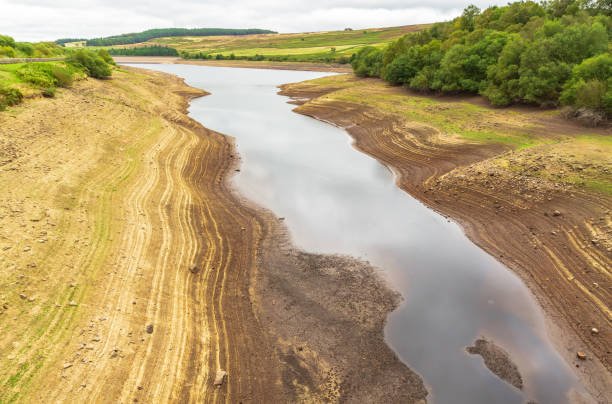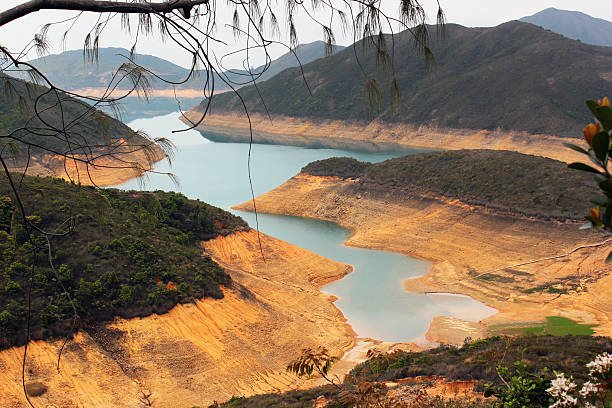Pictures of the Different Types of Droughts: Droughts are natural disasters characterized by an extended period of insufficient rainfall leading to a shortage of water. They occur in virtually all climatic zones, but their characteristics and impacts can significantly vary from one region to another. Droughts can have serious environmental, social, and economic impacts. They can lead to crop failure, water supply shortages, and subsequent food insecurity, and can also contribute to increased mortality in wildlife, damage to aquatic ecosystems, and even societal changes.
Droughts are typically classified into four types: meteorological, agricultural, hydrological, and socioeconomic. Each type is defined by its cause and impact. Meteorological droughts occur due to decreased precipitation over a period of time. Agricultural droughts happen when there is insufficient moisture for crop or range production. Hydrological droughts are marked by reduced water supplies in sources such as reservoirs, aquifers, and rivers. Lastly, socioeconomic droughts occur when the demand for water exceeds the supply during a period of adverse weather conditions.
Understanding these types of droughts is crucial for managing water resources and preparing for and mitigating the impacts of these natural disasters. As climate change continues to progress, studying droughts and developing strategies for drought resistance and resilience is becoming increasingly important.
Pictures of the Different Types of Droughts
Droughts can generally be divided into four main types:
Meteorological Drought:

This type of drought refers to a period with below-average precipitation. Meteorological drought is usually the initial drought to occur and can be specific to certain regions as the amount of “normal” precipitation can vary between different areas. For instance, a few weeks without rain might be considered a drought in a tropical rainforest, but the same wouldn’t be true in a desert.
Agricultural Drought:

This type of drought happens when there’s not enough moisture for average crop or range production. This could be due to a lack of rainfall or conditions that cause rapid evaporation of water, such as high temperatures and winds. Agricultural droughts are of significant concern to farmers and can lead to a decrease in food production and increased prices.
Hydrological Drought:

This type of drought is related to the effects of periods of precipitation shortages on water supply. This could be seen in lower levels in reservoirs, lakes, and rivers, as well as decreased groundwater levels. Hydrological droughts are often seen after many months of meteorological drought.
Socioeconomic Drought:

This type of drought associates the supply and demand of economic goods with elements of meteorological, agricultural, and hydrological drought. It happens when the demand for an economic good exceeds supply as a result of a weather-related shortfall in water supply.
Examples of Socioeconomic Drought in Cape Town
Socioeconomic drought occurs when the demand for water exceeds the available supply during a period of adverse weather conditions. This type of drought has direct impacts on the production and availability of goods and services in society. Here’s an example from South Africa:
The Cape Town Water Crisis (2015-2018) in South Africa is an example of a socioeconomic drought. Cape Town, one of the most populated cities in South Africa, faced a severe water shortage due to three consecutive years of drought, which is considered to be a once-in-300-years event.
The city’s reservoirs fell to critical levels, leading to strict water rationing measures. At the height of the crisis, each city resident was limited to 50 liters of water per day (for comparison, the average American uses about 330 liters per day). This water was to be used for drinking, cooking, washing, and all other daily needs.
The impact of this drought extended beyond just the availability of water for consumption. Agriculture was severely affected, which led to a significant loss of jobs in a region where employment is largely tied to farming. The tourism industry, a major economic driver in Cape Town, was also impacted as potential tourists were deterred by the water crisis.
This crisis highlighted the importance of sustainable water management strategies and the need to prepare for potential future droughts due to climate change. Cape Town has since made significant changes to its water management policies, including increasing the price of water, investing in new water sources such as desalination and recycling, and implementing public education campaigns about water conservation.
Remember, these types of droughts are interconnected. Meteorological drought can lead to agricultural and hydrological droughts, and all three can contribute to socioeconomic drought. Furthermore, the impacts of drought can be exacerbated by human activities such as excessive water usage, poor land management, and climate change.
Geography Grade 11 Research Resources
Below are the relevant resources for The Impact of Drought in South Africa Research, Geography Grade 11
- A map of South Africa, that indicates the drought-stricken areas
- Annual rainfall graphs of the past five years
- Pictures of the different types of droughts
- A brief discussion on the annual rainfall graphs
- How can droughts be triggered by Physical (natural) conditions
- How can droughts be triggered by Human activities
- Outline the negative impact of droughts on the economy of South Africa
- Outline the negative impact of droughts on the farmers of South Africa
- Discuss drought prevention and drought preparation strategies
- What is the relationship between climate change and the regularity of droughts
- What is the way forward regarding droughts for the government and the people of South Africa





